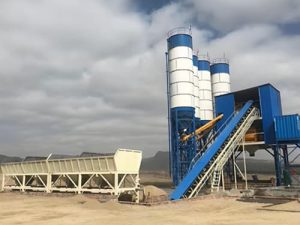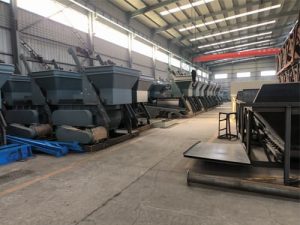Relative News
Products
Core Fault Phenomena and Response Strategies of Concrete Mixer Machines
Concrete Mixer Machines are prone to malfunctions during long-term use due to component wear, improper operation, or lack of maintenance. The following is the cause analysis and troubleshooting steps for six typical malfunctions:
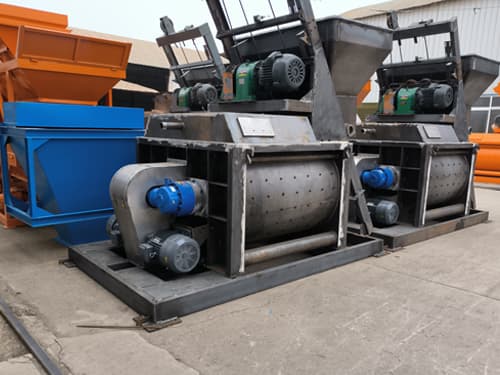
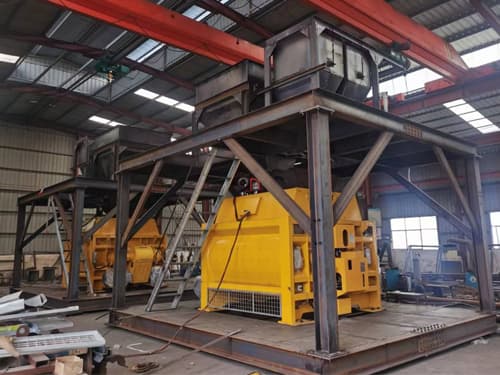
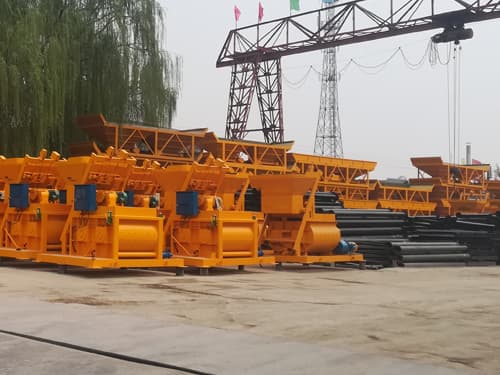
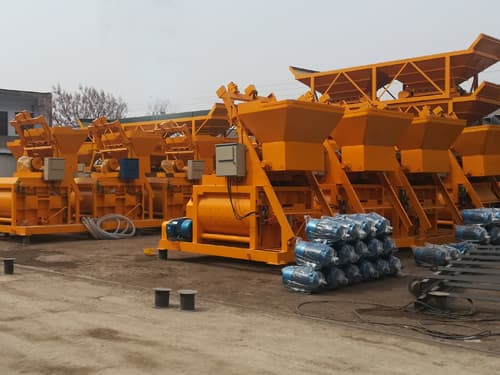
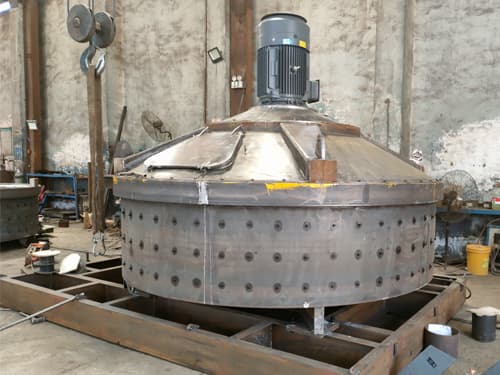
1. The mixer motor cannot start
- Fault cause: Power line open circuit, plug damage, or motor stator/rotor burnout.
- Solution:
Check if the power cord and plug are conductive, and replace damaged parts;
If the circuit is normal, disassemble the motor to inspect the stator windings and rotor; if damaged, the entire unit needs to be replaced.
2. The Concrete Mixer bucket cannot rotate
- Fault Cause: Agitator barrel bearing seizure, reducer gear damage, or motor output failure.
- Solution:
Prioritize checking the bearing lubrication status and wear degree, and replace damaged bearings;
If the bearing is normal, check the reducer (gear meshing condition) and the motor (output shaft rotation) in sequence, and repair or replace the faulty components.
3. The rotation speed of the Mixer barrel is too slow
- Fault Cause: Insufficient oil quantity in the reducer, gear wear, or motor power attenuation.
- Solution:
Supplement the reducer lubricating oil to the standard scale;
If the oil quantity is sufficient, check the gear meshing clearance and replace the excessively worn gears;
Detect the motor speed and current, and replace the motor when insufficient power is confirmed.
4. Abnormal noise during equipment operation
- Fault cause: Foreign matter stuck in the mixing barrel, bearing damage, or poor meshing of reducer gears.
- Solution:
Stop the mixer machines to clean up stones, steel bars and other debris in the mixing bucket;
If the abnormal noise persists, check the bearing clearance and the gear tooth surface of the reducer, and replace the damaged components.
5. Oil leakage phenomenon
- Fault Cause: Aging of reducer seals, excessive clearance due to gear wear, or bearing seat leakage.
- Solution:
Replace the input/output shaft seals of the reducer;
If the Concrete Mixer Machines seal is normal, disassemble and inspect the gear meshing surface and bearing wear, and replace the reducer as a whole if necessary.
6. Overload Shutdown (Stall Trip)
- Fault Cause: Excessive materials in the mixing bucket, insufficient motor power, or jamming of reducer gears.
- Solution:
Empty the excess materials in the mixing barrel and feed materials according to the rated load;
Detect the motor overload protection device and confirm the power matching;
Check if the Concrete Mixer Machines reducer gears are broken or jammed by foreign objects, and repair or replace damaged parts.
Special fault: stirring shaft seizure
- Fault Cause:
Improper feeding sequence causes cement to wrap sand and gravel, resulting in clumping and sticking to the shaft;
The flushing position is deviated or the water pressure is insufficient, making it impossible to remove the residual concrete on the shaft surface;
After shutdown, the cleaning was not carried out in time, and the residual materials solidified and formed scabs.
- Solution:
Optimize the feeding sequence (add sand and gravel first, then add cement), and adjust the angle and pressure of the flushing nozzle;
Rinse the mixing shaft with high-pressure water after each use, and manually remove stubborn crusts.
Fault Prevention and Maintenance Recommendations
Regular Inspection: Check the reducer’s lubricating oil level, bearing temperature, and wire insulation layer monthly;
Cleaning and Maintenance: After each shift, clean the residual materials in the mixing bucket and on the shaft surface to avoid crusting;
Standardized Operation: Feed materials strictly according to the proportion, prohibit overloading operation, and ensure stable motor voltage.
Through the above systematic inspection and maintenance, the failure rate can be significantly reduced, the service life of equipment can be prolonged, and the continuity of construction can be guaranteed.
Cleaning Methods and Precautions for Concrete Mixer
The Core Principles and Necessity of Cleaning
If a Concrete Mixer Machines is not cleaned in time after use, residual concrete will solidify, leading to component wear, reduced efficiency, and even malfunctions. Regular cleaning can extend equipment life and ensure mixing quality, and a plan needs to be formulated based on the Concrete Mixer Machines type (such as fixed or mobile) and usage scenario (such as cold environments).
General Cleaning Steps
Basic Cleaning Process (Applicable to All Types of Blenders)
Shutdown and Power Off: Cut off the power supply and lock the switch box to ensure the safety of operators.
Preliminary Cleaning:
- Pour out the remaining materials in the mixing drum and rinse the residual concrete on the surface with water.
- If there are large residues, use a scraper or chisel to remove them. Do not hit with a sledgehammer (to avoid damaging the cylinder wall).
Deep Cleaning:
- Pour clean water and stones (or special cleaning agent) into the drum, start the mixing drum to run for 10-15 minutes, and use the friction of stones to remove the attachments on the inner wall.
- The small blender’s stirring blades can be disassembled, and a brush can be used to scrub the residues in the gaps.
Rinsing and Drying: After draining the sewage, rinse thoroughly with clean water, and wipe dry the inside of the cylinder and the blades to prevent rust.
Special Scene Cleaning Requirements
Scenario | Cleaning Points |
|—————-|——————————————————————————|
Long-term Shutdown | After cleaning, apply rust inhibitor and cover with dust cover; for mobile equipment, remove tires and maintain wheel axles. |
Severe Cold Season | After cleaning, completely drain the accumulated water in the water pump, water tank and water pipes to prevent parts from freezing and cracking. |
Plastic/Polished Parts | Use neutral detergent for plastic parts and carbon cleaner for polished parts; avoid scratching with hard objects. |
Cleaning Safety Specifications
Personal Protection: When entering the mixing drum for cleaning, the power supply must be cut off and a designated person must be assigned for supervision. The fuse should be removed or the electric switch box should be locked.
Mechanical Safety: The feeding hopper must be fixed or lowered into the hopper pit to prevent accidental contact with the crank handle from causing the hopper to rise and injure people.
Environmental Requirements: Cleaning wastewater shall be discharged after treatment to avoid concrete residues blocking the sewer.
Inspection and Maintenance after Cleaning
Component Inspection: Check that the stirring blades and transmission system are not loose, and add lubricating oil to the lubrication parts.
Functional Test: Run the mixing drum with an empty vehicle and check whether the steering and braking devices are normal.
Anti-rust Treatment: Apply anti-rust agent to rust-prone areas such as welding points and seams to extend the durability of the equipment.
By strictly implementing the above cleaning steps and specifications, mixer failures can be effectively prevented, and the operational efficiency and safety of the equipment can be improved.

